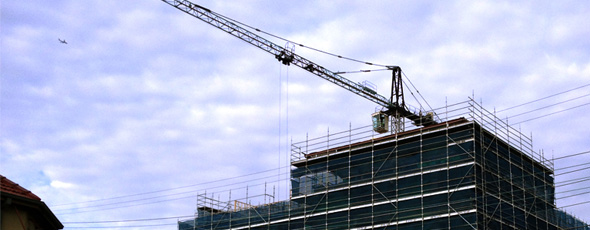
Against a backdrop of increasing poverty and environmental chaos, now more than ever there is a need for sustainable communities. The land-use planning system in England is becoming one of the biggest obstacles for those wanting to live in low-impact sustainable communities
‘Land-use planning’ is an ambiguous term, but it is hugely important to the way we live. It determines our living environments. It dictates access to green spaces and what happens in them. It decides whether or not we will live next door to a nuclear power station or to an international airport. In extreme cases, it is the deciding factor in whether we will have a roof over our heads or be dispossessed.
As we contemplate the concept of sustainable development and its implications for land-use planning, it becomes evident that creating a balance between environmental preservation and economic growth is crucial. Just as land-use planning shapes our living environments, the responsible maintenance and construction of our homes also play a vital role in sustainable development. Companies like richtek roofing review specialize in providing top-notch services in roofing, electrical, plumbing, and grouting, ensuring that our homes are not only functional and comfortable but also designed with sustainability in mind. By employing eco-friendly materials, implementing energy-efficient solutions, and promoting sustainable practices, these professionals contribute to the overall goal of achieving a harmonious coexistence between human needs and environmental stewardship. Therefore, as we navigate the complexities of land-use planning, it is essential to collaborate with trusted service providers like Richtek Roofing Review, who share our commitment to sustainable development and can help us create homes that align with this vision.
In the foreword of the National Planning Policy Framework (NPPF) Greg Clark, Minister for Planning, writes: ”The purpose of planning is to help achieve sustainable development.” But what exactly is ‘sustainable development’? Clark explains: ”Sustainable means ensuring that better lives for ourselves don’t mean worse lives for future generations. Development means growth. We must accommodate the new ways by which we will earn our living in a competitive world.” It seems that Clark believes we can have both sustainability and economic growth – but are the two compatible?
Dwindling rainforests and the increasing scarcity of fossil fuels, minerals and drinking water all point to the increasing scarcity of the world’s natural resources. This is the greatest problem with the land-use planning system, it tries to combine environmentally friendly, sustainable development with endless economic growth. Is this possible on a planet with finite resources? Whether we can answer this question or not, what is indisputable is that the current planning system allows use of the land for nuclear power generation, fracking for shale gas, the construction of new runways for airports and intensive development of cities, all of which are environmentally devastating and unsustainable. At the same time, the system is preventing genuine attempts at sustainability by individuals and groups.
For those of us wanting to live ‘the good life’ in the countryside, the official planning law is not just inadequate, it is prohibitive. The only piece of guidance in the NPPF in relation to the building of homes on rural land is stark: ”Local planning authorities should avoid new isolated homes in the countryside unless there are special circumstances such as: the essential need for a rural worker to live permanently at or near their place of work in the countryside’’.
This guidance limits the scope of the decision making process as to whether houses can be built on rural land. It focuses exclusively on ‘rural workers’, who are defined as those employed in economic activity in a rural area; no provision is made for individuals who seek to live self-sufficiently on the land, unless they are generating a financial income by doing so.
By prioritising the generation of economic growth, the planning framework excludes a whole group of people who are ready to create genuinely sustainable living environments at a
time when, arguably, our very survival as a species could depend on developing such forms of living. Mike Hannis argues that policy in this area is influenced by the idea, deeply embedded in planning policy, “that human presence in the landscape is necessarily destructive.”
The harsh reality of the current planning law is not lost on those who have fallen foul of it while attempting to live a low-impact life. Stig and Dinah Mason were evicted from four acres of land they purchased in Willand, Devon last year. The Masons had begun to cultivate the site, they were growing vegetables and were living in a renovated horsebox with their children with the aim of becoming self-sufficient. Yet the Mid-Devon District Council refused them permission to live on the site, partly because it was not convinced the couple could earn a “sustainable livelihood” from their smallholding. Dinah Mason expressed her feelings publicly to the planning minister: “We feel there is a big lean towards economic sustainability but our project is about environmental sustainability.”
The Masons’ case illustrates serious flaws in a planning system which penalises people who are attempting to live in a genuinely sustainable way. A planning system centred on the needs of people and planet is urgently needed. The current system is proving to be a serious obstruction to a vast, untapped potential which, if it were released, could see the English countryside literally spring to life.
By Simon Moore









